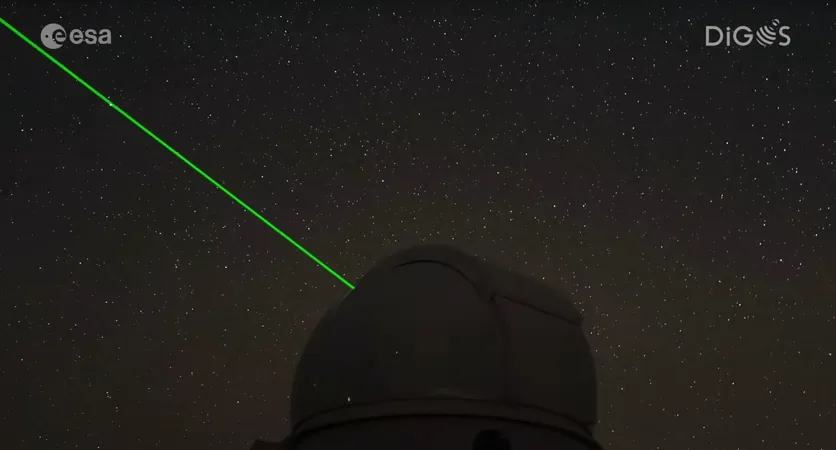
Meet the Revolutionary Telescopes Using Lasers to Combat Space Junk and Protect Our Satellites!
2025-09-15
Author: Li
A Game-Changer in Space Debris Tracking
High above the stunning landscapes of Mount Teide in Tenerife, Spain, two groundbreaking telescopes are taking space safety to new heights! The Izaña-1 and Izaña-2 laser-ranging stations operated by the European Space Agency (ESA) are equipped with advanced laser technology to track dangerous fragments of space debris that could threaten vital satellites.
How They Work: A Laser Duo in Action
These two telescopes work in perfect harmony. While Izaña-2 sends out powerful laser pulses toward orbiting debris, Izaña-1 detects the reflected signals. This dynamic duo can track the debris’s orbital path, helping scientists predict potential collisions with satellites.
The Risks of Space Debris: A Domino Effect
Why is this so critical? The consequences of a collision can escalate quickly—from damaging a satellite and causing huge financial losses to triggering a catastrophic chain reaction known as Kessler Syndrome. In this scenario, space debris would multiply, rendering large areas of low Earth orbit unmanageable!
Pushing for Automation and Innovation
Currently, the Izaña system functions semi-automatically, with a team monitoring operations from afar. But the ambition doesn’t stop there! ESA engineers like Andrea Di Mira reveal plans for full automation to increase productivity and efficiency. Imagine a world where satellites can dodge danger on their own!
The Future: Using Lasers to Maneuver Space Junk
But that's not all—the Izaña-2 laser might also be able to guide space debris away from satellites using a concept known as "laser momentum transfer." This involves gently nudging space junk off course without requiring satellite thrusters, saving precious fuel and extending mission durations!
Introducing OMLET: The Space-Traffic Cop
ESA’s innovative approach doesn’t end with debris tracking; enter OMLET: Orbital Maintenance via Laser momEntum Transfer. This system aims to provide satellite operators with real-time data on debris locations, effectively acting like a traffic cop in the cosmos!
Double Duty: Lasers for Communication and Safety
There’s even potential for these lasers to double as a communication tool! By encoding data into laser beams, they could transmit information with quantum encryption, ensuring security in our digital messages—with less interference than traditional radio waves!
Lasers: A Bright Future for Space
Despite over six decades since their invention, lasers are proving to be indispensable in our quest for a safer and more efficient space environment. With innovative technology like the Izaña telescopes, the cosmos may soon see a dramatic reduction in the perils posed by space debris!


 Brasil (PT)
Brasil (PT)
 Canada (EN)
Canada (EN)
 Chile (ES)
Chile (ES)
 Česko (CS)
Česko (CS)
 대한민국 (KO)
대한민국 (KO)
 España (ES)
España (ES)
 France (FR)
France (FR)
 Hong Kong (EN)
Hong Kong (EN)
 Italia (IT)
Italia (IT)
 日本 (JA)
日本 (JA)
 Magyarország (HU)
Magyarország (HU)
 Norge (NO)
Norge (NO)
 Polska (PL)
Polska (PL)
 Schweiz (DE)
Schweiz (DE)
 Singapore (EN)
Singapore (EN)
 Sverige (SV)
Sverige (SV)
 Suomi (FI)
Suomi (FI)
 Türkiye (TR)
Türkiye (TR)
 الإمارات العربية المتحدة (AR)
الإمارات العربية المتحدة (AR)